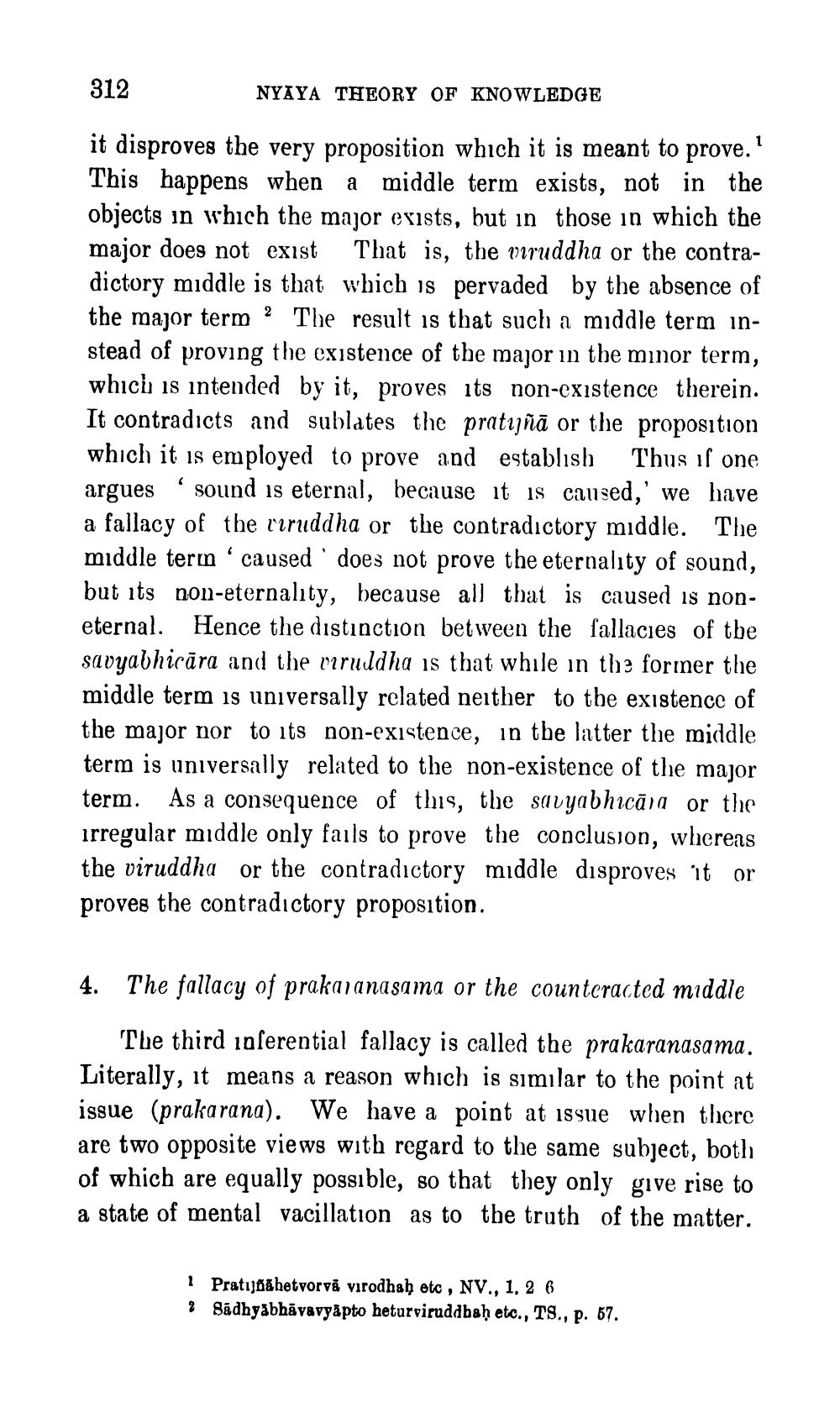________________
312
"
it disproves the very proposition which it is meant to prove." This happens when a middle term exists, not in the objects in which the major exists, but in those in which the major does not exist That is, the viruddha or the contradictory middle is that which is pervaded by the absence of the major term 2 The result is that such a middle term instead of proving the existence of the major in the minor term, which is intended by it, proves its non-existence therein. It contradicts and sublates the pratyña or the proposition which it is employed to prove and establish Thus if one argues sound is eternal, because it is caused,' we have a fallacy of the viruddha or the contradictory middle. The middle term caused does not prove the eternality of sound, but its non-eternality, because all that is caused is noneternal. Hence the distinction between the fallacies of the savyabhicara and the viruddha is that while in the former the middle term is universally related neither to the existence of the major nor to its non-existence, in the latter the middle term is universally related to the non-existence of the major term. As a consequence of this, the savyabhicāra or the irregular middle only fails to prove the conclusion, whereas the viruddha or the contradictory middle disproves it or proves the contradictory proposition.
NYAYA THEORY OF KNOWLEDGE
4.
The fallacy of prakaranasama or the counteracted middle The third inferential fallacy is called the prakaranasama. Literally, it means a reason which similar to the point at issue (prakarana). We have a point at issue when there are two opposite views with regard to the same subject, both of which are equally possible, so that they only give rise to a state of mental vacillation as to the truth of the matter.
1 Pratijñāhetvorva virodhaḥ etc, NV., 1, 2 6
2 Sadhyābhāvavyāpto heturviruddhaḥ etc., TS., p. 57.




